









































MIDWEEK UPDATE 9 SEPTEMBER 2020



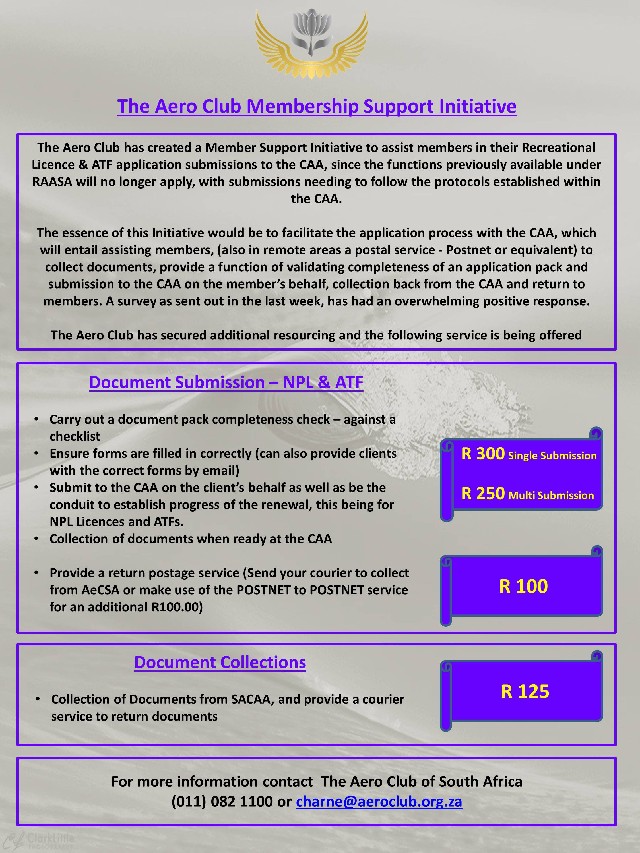

COVID 19 REGULATIONS, INITIATIVES AND AEROCLUB NEWS
AERO CLUB COMMUNIQUE SEP 2020 # 1
LAUNCH OF THE CAA'S GENERAL AVIATION SAFETY STRATEGY (GASS)
The CAA invites you to join the GASS Launch Webinar taking place on 11 September 2020 from 10:00 to 13:00. The overall strategy will cover "Regulatory Empowerment" where a devolution of powers of safety oversight be made at primary levels which should result in more cost effective operation, and "Community Responsibility" where regulatory measures are adapted to bring about more proportionality in aviation governance which will place more responsibility on the GA community. In short - there will be more self-governance of our activities. This will lead to an amendment of part 149 in the coming months with a focus group that will lead the discussions on this topic. Overall, this will be of great benefit to recreational aviation and the way we operate but it comes with the added individual safety of flight responsibility.
Link to the webinar: - https://protect-za.mimecast.com/s/HeVLCLg1NQfR9zvKsBuZ2N
It will additionally be streamed on the SACAA Facebook Page https://www.facebook.com/SACivilAviationAuthority/
and YouTube channel. https://www.youtube.com/channel/UCzA_xb4Edcz0JjL2D6I8yuw
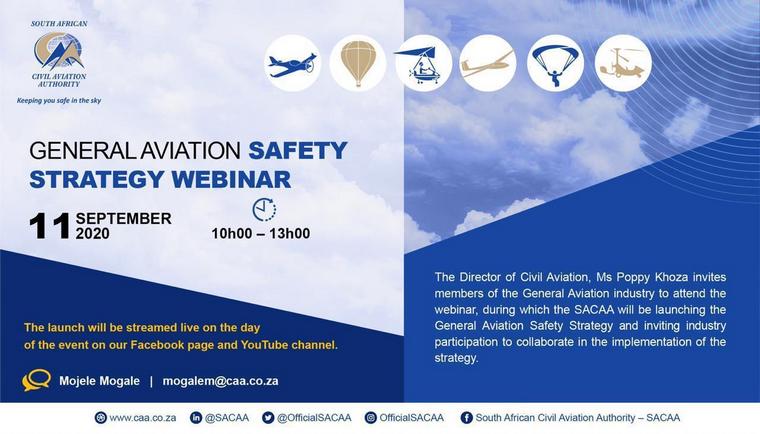
AERO CLUB CENTENARY YEARBOOK PRE-ORDER FORM

The Aero Club of SA is taking pre-orders for the Centenary Yearbook, to assess the demand for a print run. It will be in the form of a hard & soft cover version as well as a limited-edition leather-bound book on request. Details of the book are available on the Aero Club Website.
Indicative Pricing: - Hard Cover Book - R 400 - Soft Cover Book - R 300 - Leather Bound Book - Add +/- R 200 for Novalite & R 500 for Leather. Delivery Options are collect at the Rand Airport Aero Club office, or door to door courier service anywhere in SA. Courier costs will range between R 100 to R 130 per book dependent on location. Volume purchases are also available should this be required. Once you have registered for a pre-order, and our print run is complete, the Aero Club will send an invoice for payment, which once received will have the book dispatched.
To get your pre-order secured, please go to this link. Centenary Yearbook Order Form
https://docs.google.com/forms/d/e/1FAIpQLSfPs1vbZM4-Qcn5LZrK3dkWaoYj7PBtLXmaNM3TP9tUm4vsSA/viewform
If you are not a member and wish to join the Aero Club and any of its sections, feel free to do so http://www.aeroclub.org.za/member-renewals-and-new-memberships/


CORONA VIRUS AND AVIATION EVENTS
Due to Covid 19 and regulations regulating travelling as well as restrictions controlling the number of people congregating together, no aviation events open to the general public will take place in the foreseeable future. Pilot's Post will advise our readers as soon as this changes.
The following events will to take place under the rules controlling the number of people congregating together and are therefore not open to the general public.
12 September
SAPFA Secunda Speed Rally at Secunda airfield
Contact Jonty Esser E-mail: jonty@promptroofing.co.za Cell: 082 855 9435
18 September
Taildraggers Airmanship Competition, Bela Bela, Warmbaths.
Please RSVP Richard Nicholson to make
arrangements. Cell 082 490 6227
Sling Aircraft
17 OCTOBER 2020 BREAKFAST FLY-IN
Good day Slingers.
With Level 2's easing of lockdown restrictions, we are thrilled to announce the first Sling Aircraft breakfast fly-in of 2020 is finally upon us! Saturday, 17 October from 07h00 to 11h30, our breakfast fly-in will be held at our premises, Tedderfield Airpark, 23 Nettleton Road, Eikenhof (FATA).
At just R100 per person paid on arrival, bring your mask, bring your buddy, relish in a scrumptious breakfast, shop Sling branded merch from our Sling Store, enjoy a factory tour and possibly even a sneak peek at our all-new Sling High Wing! In addition, a spot landing competition will be held on arrival between 07h00 and 08h00. Tea and coffee will be served from 08h00 and breakfast will be served between 09h00 and 11h00.
Spots are of course are limited due to Covid-19 regulations so, if you would like to experience the Sling lifestyle for yourself, RSVP by Wednesday, 14 October in order to avoid disappointment. Fly, drive, walk or bike, you will not be disappointed.
See you there, Slingers!
THE INTINERARY IS AS FOLLOWS:
• 07h00 to 08h00 - Spot landing competition.
• 08h00 - Tea & Coffee is served.
• 09h00 - Breakfast is served.
• 09h30 - Factory tours will commence.
• 10h00 - Prize giving for the spot landing competition.
https://docs.google.com/forms/d/e/1FAIpQLSff8jv7G5S4LWTxO1ZZSguNTB4vL0gmrUbvHNSVSODE6-n-fg/viewform
29 September to 4 October
SAC National Championships Tempe Airport, Bloemfontein
Contact Annie Boon E-mail: chunge@mweb.co.za
24 and 25 October
SAC North West Regionals at Klerksdorp airfield
Contact Annie Boon E-mail: chunge@mweb.co.za

PLEASE GO TO
www.youtube.com/channel/UCCuRVZAGodT6sztTeXBGeMw
and subscribe to our YouTube channel


SOUTH AFRICAN AIR FORCE MUSEUM SPITFIRE TE213 RESTORATION

Spitfire TE213 in the SAAF colour scheme she carried immediately before her crash in 2000. Photograph: Russell Dixon-Paver
The Friends of the South African Air Force Museum (Friends), a volunteer organisation who support the three branches of the SAAF Museum in Cape Town, Port Elizabeth and Pretoria, are managing the restoration of this aircraft, which is taking place at the Museum at Air Force Base Swartkop in Valhalla, Pretoria. The airframe is presently being dis-assembled, assessed and evaluated.
As with many museums, the workshop areas are limited and the project needs an additional, dedicated work space. The SAAF Museum have approved erection of a new workshop and hangar facility and fund raising has commenced for this.
Performance Centre, a local company which upgrades Ford Mustangs and SUVs to very high performance vehicles, approached the project in 2019, suggesting that they build ten of these Ford Mustangs in aircraft colour schemes. The Friends worked with them to provide authentic colour schemes and the first one was completed in the colours which TE213 bore in 1950. The remaining nine Mustangs will represent nine South African Aces or flying legends, which colour schemes can be individually selected by the buyers. From the sale of these Mustangs, Performance Centre has offered a generous contribution to the Spitfire Restoration Project. This first car is presently for sale at Performance Centre.
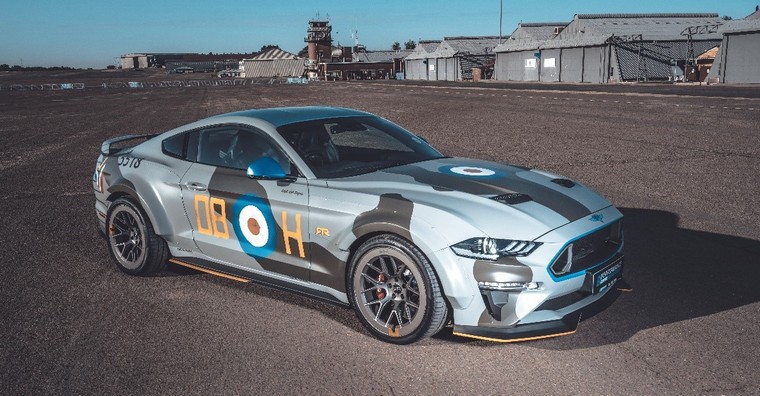
Ford Mustang 'DB H' Photograph: Stephen Segal
The photograph was taken at AFB Swartkop, South Africa's, and possibly the world's oldest still operating military air base, which will be celebrating its centenary in 2021. In the background are hangars which formed part of the Imperial Gift to South Africa after the First World War, and which included the aircraft that formed the original SAAF.
The colours on the car are those which the Spitfire will bear on completion of the restoration: DB-H, from SAAF 2 Squadron and are historically very accurate. 2 Squadron, known as the Flying Cheetahs, served with distinction during World War Two in East Africa, North Africa and Italy. They also served in the Korean War and the later Southern African conflicts. The Ford Mustang bears the name of General Bob Rogers, a SAAF legend, who flew that Spitfire and later became a Chief of the SAAF.
iang@xsinet.co.za

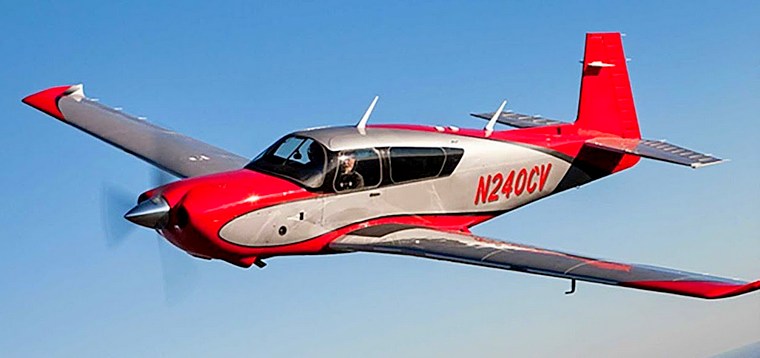
Mooney has been in and out of business on a regular basis the last couple of years. Its last rescue was by a group of Chinese investors who had great plans for the iconic airframer, who over the years, have put more than 7,000 aircraft in the sky. Photo © Mooney.
A new group, all Mooney owners, led by CEO Jonny Pollack, has now acquired an 80-percent stake in the company. The group has pledged to maintain customer support while working to add enough useful load to the Ovation and other models that could allow for airframe parachutes and make Mooneys more competitive.
Pollack became involved with the company in 2019 and has effectively been running the company since January of this year. The goal of the new consortium is firstly to put the company back on a solid footing. They aim to do that by initially manufacturing parts for the existing fleet before branching out into full scale production of improved models of the current inventory.
One of the company's plans that they are working on is a useful load retrofit. According to Pollack, the retro fit of an 300 pounds to 500 pounds of useful load that could pave the way for a whole-airplane parachute, new landing gear designs, carbon fibre engine cowl and additional utility that could change the current platform dramatically and put the company in a position to really compete with Cirrus Aircraft's whole-airplane parachute safety message.
However, Pollack warned that the changes are not going to happen overnight and asked current owners to be patient. "All of the resources are literally going to keeping the lights on and to make sure we have parts availability." He said.

A data scientist, a software engineer, or a drone operator, who would have imagined such jobs just thirty years ago, let alone becoming mainstream? Being a flying car instructor is one of those jobs that are expected in the future. Currently, it's not something you will find on every resume. It's a job that you can expect to see in the coming decade. PAL-V is expanding its team of flying car instructors, and soon, a few more people in the world can join this exclusive group of Flying Car instructors. Video © Pal V.
Future PAL-V Liberty owners will be going through a modular training course existing of six blocks of a 5-day program. The training is designed in such a way that customers are trained in a fast, professional and pleasant manner to become full-fledged PAL-V pilots. During the training, attention is not only paid to learning to fly safely but also on how to use the PAL-V Liberty as a mobility solution. The FlyDrive Academy trains people to become a carflyer, an experience that no other vehicle than the PAL-V Liberty can deliver.
The PAL-V Liberty is developed by the Dutch company PAL-V N.V. Since PAL-V successfully started the test flights with the PAL-V ONE in 2012, major steps have been taken to develop and certify the first commercial product, the PAL-V Liberty. The PAL-V Liberty uses gyroplane techniques. A gyroplane is one of the simplest and safest ways of flying due to its dynamically stable characteristics and the fact that a gyroplane has no so-called stall speed. This makes a gyroplane an extremely suitable aircraft to learn to fly.

SKYDRIVE CONDUCTS MANNED FLIGHTS AND MOVES FORWARD WITH NOBUO KISHI AT THE HELM
World-leading flying car developer, SkyDrive, has entered the final stages of testing its demonstration vehicle after it completed the first-ever manned test flights in Japan. Video © SkyDrive.
SkyDrive has completed its technical verification phase. Since launching an unmanned outdoor flight test in December 2018, it has conducted numerous technical verifications. This was followed by manned flight tests that started in December 2019 and completed safely in March 2020 - confirming the controllability and flight stability of the test aircraft. The next stage, which is starting now, involves feeding back improvements to technical design that were picked up during the manned operation of the aircraft.
SkyDrive looks set to launch its flying car to the Japanese market in 2023. Safety is a key priority and it will be following the same level of development management that is practiced by conventional aircraft manufacturers during the airworthiness certification phase.
Mr Kishi will bring considerable expertise and experience to the team, which will enable SkyDrive to take to the skies before competitors. SkyDrive uses lean development*2 and Mr Kishi will advance this process with further attention to safety and accelerate aircraft development.

LEONARDO: TOKYO METROPOLITAN GOVERNMENT EVALUATES THE AW609 TILTROTOR'S UNIQUE CAPABILITIES TO REVOLUTIONIZE CONNECTIONS WITH OGASAWARA ISLAND
The Tokyo Metropolitan Government recently announced the intention to evaluate the AW609 multirole commercial tiltrotor's unique capabilities to deliver unprecedented levels of transport to Ogasawara island in the future. The distinguished characteristics of the world's first commercial tiltrotor, combining turboprop-like performance (speed, range, altitude) and rotorcraft versatility (vertical take-off / landing and hovering) would deliver outstanding services to reach Ogasawara, approximately 1000 km from Tokyo. Missions would be performed in all weather conditions and with limited infrastructural impact thanks to its helicopter-like footprint. Video © Leonardo.
The AW609 excels at providing fast point to point transportation at long ranges, whether it is connecting city centres or providing timely access to remote locations. Thanks to a 275-knot speed, a 25,000 ft altitude and 1000 nm maximum range, users will benefit from the AW609's unique ability to fly above adverse weather in the comfort of a pressurized cabin while maintaining rotorcraft vertical take-off and landing / hovering versatility. Modern 'green' technology ensures reduced emissions and noise. The AW609 is ideally suited to meet a range of operational requirements in Japan such as passenger transport, EMS, SAR, surveillance, electronic newsgathering and VVIP transport.
With a fleet of over 130 helicopters of various models in Japan today performing a wide variety of civil, public service and military missions, Leonardo has a long-standing in-country presence with a comprehensive support service network that the AW609 will benefit from. The AW609 would support Japan in the introduction of innovative technology ways and solutions to meet connection and public service requirements across the nation, both in normal and in emergency and extreme natural events conditions.
The AW609 will be the first civil certified tiltrotor aircraft and is poised to transform private and business travel, emergency medical service (EMS), search and rescue (SAR), offshore operations and patrol, among other uses. The AW609 carries up to nine passengers, flying safely above inclement weather and in known icing conditions.
The first two production AW609s are currently being assembled in Philadelphia.

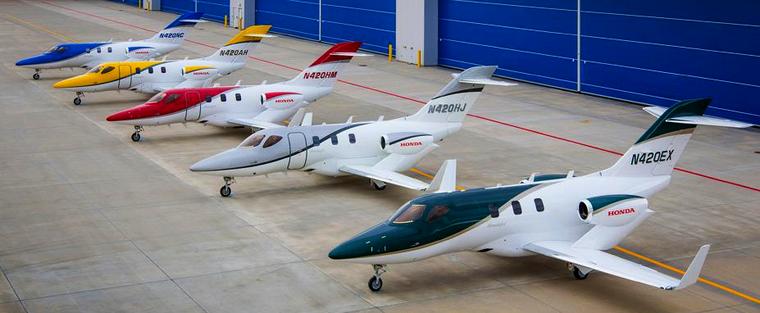
Honda Aircraft Company has announced that the HondaJet is the most delivered aircraft in its class for the first half of 2019, based on numbers provided by the General Aviation Manufacturers Association (GAMA). During the first six months of the year, 17 aircraft were delivered to customers around the world. Photo © Hondjet.
"We are thrilled that the HondaJet continues to be the aircraft of choice of our customers, both future and current. Maintaining our position as the most delivered aircraft in our class is a reflection of our team's dedication to the design, service and efficient production of the most competitive very light jet," said Michimasa Fujino, president and CEO of Honda Aircraft Company.
Honda Aircraft Company's sales and service footprint spans territories in North America, Europe, Middle and South America, Southeast Asia, China, the Middle East, India and Japan. The HondaJet fleet is currently comprised of more than 130 aircraft around the globe.

BEST-SELLING MIDSIZE JET, THE CESSNA CITATION LATITUDE, MARKS FIFTH ANNIVERSARY OF FIRST DELIVERY
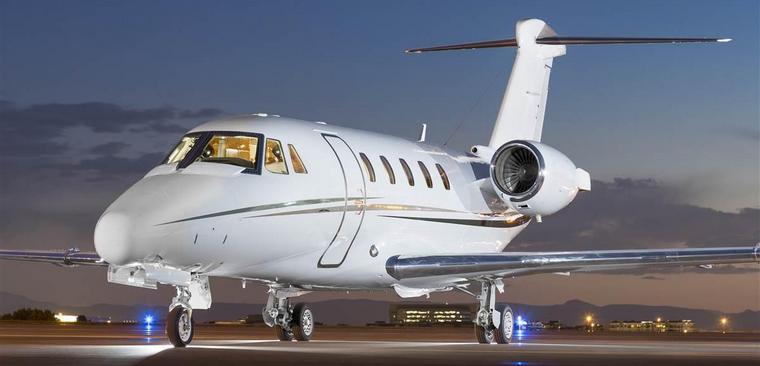
Textron Aviation is celebrating five years since the first customer delivery of its popular Cessna Citation Latitude aircraft. The world's most-delivered midsize business jet for four consecutive years proved an immediate hit with customers due to its reliability, versatility and impressive 2,700-nautical mile range. With nearly 240 delivered to date, the Citation Latitude jet now comprises more than 40 percent of all midsize business jet deliveries since 2015 and has surpassed 320,000 fleet hours since entry into service. Photo © Textron.
"Customers have returned to the Citation Latitude time and time again, proving its enduring performance over the past half-decade. Its low direct operating costs have made it the cornerstone of many fleets and we look forward to seeing this popular aircraft rise to new missions," continued Scholl.
As customers look to lower the environmental impact of their journeys on the planet, Textron Aviation is committed to conserving the world's resources by embracing the use of sustainable aviation fuel. The Citation Latitude jet is just one of the company's fleet of 13 commercial turbine aircraft capable of flying with sustainable aviation fuel.
The Citation Latitude is backed by Textron Aviation's extensive global customer service team. Customers have direct access to more than 3,000 expert employees, including service representatives offering personalized maintenance, inspections, parts, repairs, avionics upgrades, equipment installations, refurbishments and other specialized services.

MD HELICOPTERS RECEIVES CERTIFICATION FOR MD 530F MGTOW INCREASE TO 3,350 POUNDS
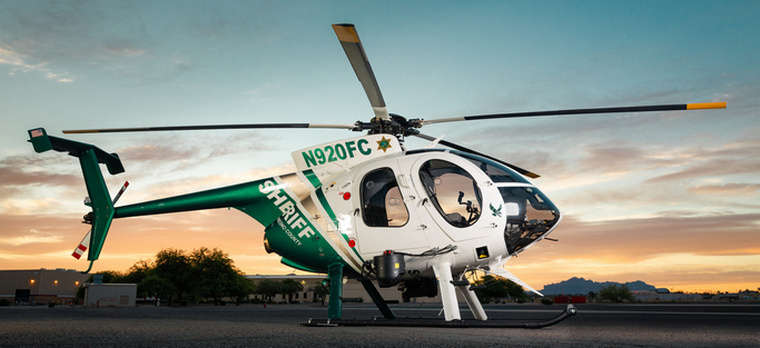
MD Helicopters, Inc. (MDHI) has received FAA certification to increase its MD 530F single engine helicopter's internal max gross take-off weight (MGTOW) from 3,100 to 3,350 lbs. This increase allows the MD 530F to support extended range, increased mission versatility, more time on target and additional mission equipment options. Photo © MD Helicopters.
MD Helicopters' Experimental Flight Test Engineering team conducted a comprehensive range of tests required to prove the aircraft meets or exceeds all FAA performance and safety requirements at the new max weight. These included performance and handling, acoustic, flight load and height velocity tests performed at different pressure altitudes, temperatures and wind conditions. Tests proved the aircraft met all requirements while still maintaining sufficient margins for safe autorotation at the higher MGTOW. MD submitted certification paperwork to the FAA for the increase in January 2020.

BOEING DELIVERS SOCOM'S FIRST NEXT-GEN CHINOOK HELICOPTER
Boeing [NYSE: BA] is delivering new technologies and performance improvements to U.S. Special Operations Command (SOCOM) with the Block II Chinook helicopter. Boeing's Philadelphia team recently delivered the first MH-47G Block II Chinook to SOCOM on time. Video © Boeing.
The company is on contract for 23 more MH-47G Block II Chinooks, having signed a contract with SOCOM in July.
Boeing has more than 4,600 employees in Pennsylvania supporting Chinook, the V-22 Osprey, MH-139A Grey Wolf and a number of services and engineering efforts. Including suppliers and vendors, Boeing's activities support an estimated 16,000 jobs in Pennsylvania.

PIPSTREL ACCEPTING ORDERS FOR ITS NUUVA V300 EVTOL MODEL
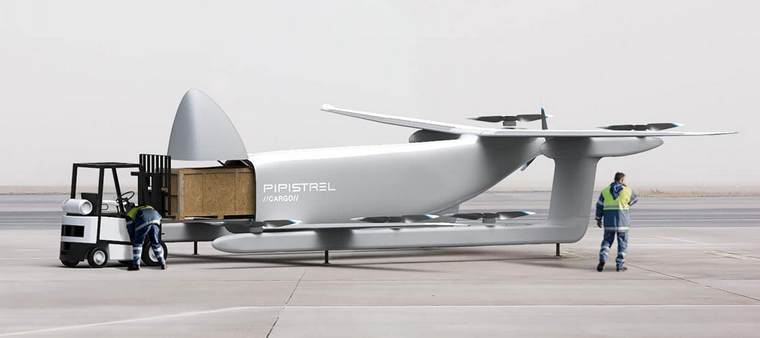
Pipstrel has begun accepting orders for its Nuuva series of cargo eVTOL aircraft this week. The flagship model, dubbed the Nuuva V300, is a long range/large capacity autonomous eVTOL vehicle optimized for aerial cargo delivery. The cargo vehicle will be able to carry up to 460kg of payload while offering operators with low costs and high efficiency. Photo © Pipistrel.
Nuuva V300 takes-off and lands using eight independent battery-powered Pipistrel E-811 electric engines (already Type Certified). The whole system is safeguarded by the integrated health self-monitoring system that alerts of any potential malfunction even before it occurs, increasing the reliability and safety.
Nuuva V300 can be customized for a wide range of missions. For operators that prioritize longer range, the vehicle's payload capacity and anti-ice capabilities can be traded for more usable fuel, being able to transport 50-kg payload for as far as 2,500 km - all this without compromising the ability to take-off and land vertically from altitudes as high as 8,000 ft. At lower take-off altitudes and with shorter mission requirements, the payload can be increased to up to 460 kg.
The smaller sibling of the Nuuva family, the V20, shares the same architecture and advantages of the larger V300, but is designed as a lightweight cargo courier carrying payloads of up to 20 kg. First customers will be able to take deliveries as early as 2021. Expect to see this variant used in final mile delivery services, while the V300 offers intra/intercity transport of cargo goods.

US AIR FORCE LEADERS GATHER FOR FIRST AGILITY PRIME EVTOL DEMO
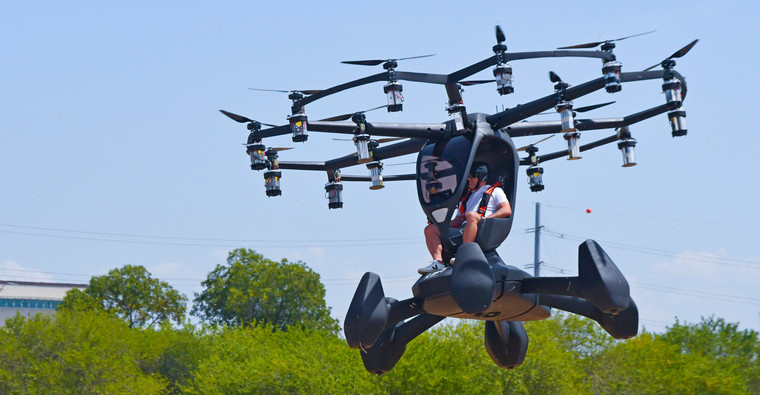
Exactly 112 years after the Wright Brothers delivered their first military aircraft, top Air Force leaders gathered with their Texas National Guard hosts and AFWERX personnel to watch the first Agility Prime ORB flight demonstration. Photo © LIFT Aircraft
The event was the first time the service had witnessed a manned eVTOL aircraft take flight under its Agility Prime program, it said on 21 August. Agility Prime is a non-traditional program seeking to accelerate the commercial market for advanced air mobility vehicles. The USAF's initiative presents an opportunity to exchange government resources in for knowledge transfer, aerial demonstration flights and potential buyouts of various aerial mobility companies that elect to participate.
In the heat of the afternoon, Matthew Chasen, LIFT chief executive officer, piloted the Hexa over the Camp Mabry parade ground, just a few miles from downtown Austin. (Air National Guard photo by Staff. Sgt. Sean Kornegay)
"We now have over fifteen of the leading aircraft manufacturers in the world applying to partner with Agility Prime, with many of them already on contract," said Col. Nathan Diller, AFWERX director and Agility Prime lead. "This flight today marks the first of many demonstrations and near-term flight tests designed to reduce the technical risk and prepare for Agility Prime fielding in 2023."
The Agility Prime program is the flagship eVTOL program for the USAF, as an increasing number of military organizations across the world become more and more interested in applications of aerial mobility technology as supplemental (and eventually in replacement of) current mobility offerings for both manned and unmanned missions.
In addition to the USAF, the US Army is examining eVTOL aircraft as a means to resupply troops, as well as provide combat search and rescue. The autonomous flying ability of the aircraft would allow the services to keep human pilots out of danger on certain missions. USAF's Agility Prime initiative, and the successful Lift HEXA flight demonstration, are providing excellent exposure for emerging aerial mobility technologies and manufacturers. Ultimately, this has a high potential for these new start-up companies to secure new contracts across both the military and commercial sectors.


Venice Municipal Airport, Venice, FL: A amateur build experimental Thorp T-18 began rapid forward motion subsequent to hand-propping, knocking down the pilot and impacting a hangar at Venice Municipal Airport (VNC/KVNC), Venice, Florida. The airplane sustained unreported damage and the sole pilot on the ground was seriously injured. (File photo. Not the accident aircraft.)

Canada, Eabamet Lake, Ontario: A Basler BT-67 aircraft operated by North Star Air, was conducting a flight to deliver 5940 L of diesel fuel per trip to the Eabametoong First Nation community. Before take-off the crew conducted the pre take-off checklist, which requires the propeller automatic feathering system to be armed for take-off. However, the crew did not arm this system. The first officer acted as the pilot flying (PF), the captain acting as the pilot not flying (PNF). Shortly after take-off, the PF called for the landing gear to be retracted. The PNF then selected the gear up at approximately 200 feet above ground level (AGL). Both engines subsequently lost power simultaneously and the flight crew executed a forced landing on Eabamet Lake, Ontario, in total darkness. The flight crew retrieved the survival kit, evacuated the aircraft via the main cabin door and swam to shore. Once on shore, they started a fire to warm up. The fire was noticed by a patrolling officer of the Nishnawbe Aski Police Service. Neither flight crew member was injured. The aircraft that remained floating in the water sustained substantial damage.
USA, near Wallops Island, Virginia: A US Navy Northrop Grumman E-2C Hawkeye was damaged beyond repair when it crashed in Accomack County, near Wallops Island, Virginia. The two pilots and two crew members managed to safely bail out of the aircraft.
USA, near Rusk County Airport, Henderson, Texas: Following a loss of engine power, a vintage Boeing N2S-1 Kaydet impacted wooded terrain just after take-off from Rusk County Airport (KRFI), Henderson, Texas. The biplane sustained substantial damage and the two occupants onboard received minor injuries.

USA, Chester, Crawford County, AR: A Cirrus SR22with four on board impacted terrain while attempting to navigate away from a storm in Chester, Arkansas. The airplane was completely destroyed and the four people onboard were fatally injured.
USA, Holloman Air Force Base in New Mexico: An USAF MQ-9 Reaper UAV was damaged when it ran off the runway during take-off. The Reaper was assigned to the 49th Wing. No other aircraft were involved in the mishap.
USA, Detroit Willow Run, MI: An Aeronaves TSM Douglas DC-9-30 freighter had taxied to runway 27 and was accelerating for take-off when the crew rejected take-off. The aircraft either did not turn left to line up the runway or veered to the right off the runway and came to a stop with all gear off the runway around about 90 degrees off the runway heading. There were no injuries. The aircraft was stuck.
UK, Sywell aerodrome, Northamptonshire: A Royal Aircraft Factory B.E.2C replica crashed while taking part in a mock dogfight display at Sywell Aerodrome. The pilot was injured.

USA, 20 Nm NE of Chico Airport, CA: An Air Spray (1967) Ltd Lockheed 188, was conducting aerial firefighting operations 20 NM North East of Chico Airport when the aircraft inadvertently entered smoke in short final and dropped retardant load. Exiting the smoke, the flight crew observed tree tops level with the left wing. The aircraft performed a second bomb run without incident. Evidence of tree strikes was discovered during maintenance post flight inspection. The aircraft was ferried back to company's maintenance base for repair.
USA, NW of Van Aire Airport, Brighton, CO: An amateur built experimental Titan T-51 Mustang, experienced an apparent departure stall and subsequent impact with the terrain shortly after take-off from Van Aire Airport, Brighton, Colorado. The airplane sustained substantial damage and the sole pilot onboard received fatal injuries.


6 SEPTEMBER 1948
A de Havilland DH.108 probably breaks the sound barrier
Initially designed to evaluate swept wing handling characteristics at low and high subsonic speeds for the proposed early tailless design of the Comet airliner, three examples of the DH 108 were built to Air Ministry specifications E.1/45 and E.11/45. With the adoption of a conventional tail for the Comet, the aircraft were used instead to investigate swept wing handling up to supersonic speeds.
On 12 April 1948, VW120 established a new World Air Speed Record of 604.98 mph (974.02 km/h) on a 62-mile (100 km) circuit. Then, on 6 September 1948, John Derry is thought to have probably exceeded the speed of sound in a shallow dive from 40,000 ft (12,195 m) to 30,000 ft (9,145 m).
All three prototypes were lost in fatal crashes.
The DH108 established a number of "firsts" for a British aircraft: it was the first British swept-winged jet aircraft and the first British tailless jet aircraft.

 |
 |
 Copyright © 2024 Pilot's Post PTY Ltd
The information, views and opinions by the authors contributing to Pilot’s Post are not necessarily those of the editor or other writers at Pilot’s Post.
Copyright © 2024 Pilot's Post PTY Ltd
The information, views and opinions by the authors contributing to Pilot’s Post are not necessarily those of the editor or other writers at Pilot’s Post.